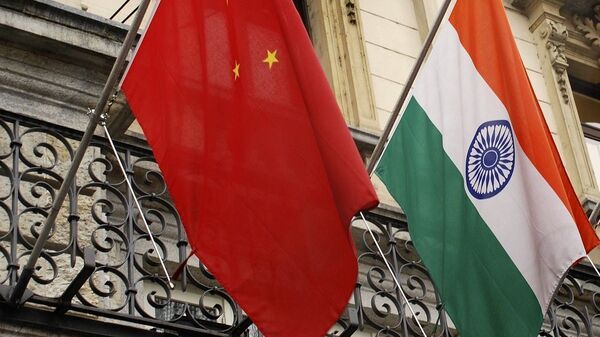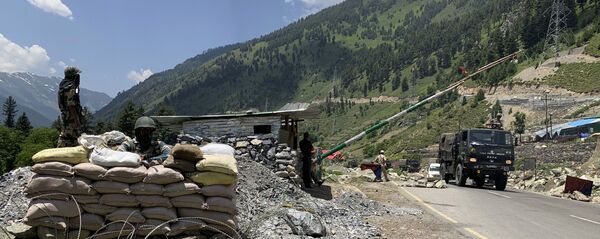India and China are entering the fifth month of the border stand-off with fresh physical altercations between the troops near Chushul in Pangong Tso on intervening night of 29/30 August.
After five rounds of Corps Commander level talks, several rounds of Division Commander level talks and 18 meetings of the Working Mechanism for Consultation and Coordination on India-China Border Affairs (WMCC), the two countries have failed to diffuse tension along the border.
Here’s the timeline of events on how the border stand-off has reached the fifth month:
Beginning of the conflict:
On 27 April, India had claimed that Chinese personnel entered the Line of Actual Control (LAC) with a vehicle, matter was resolved following a confrontation with the Indian Army. On 10 May, 11 soldiers – four Indian and seven Chinese – were injured after a tense face-off near the Naku La sector (ahead of Muguthang Valley), a pass at a height of over 5,000 metres in the Sikkim sector. Another face-off occurred between the troops from two sides near Nallah in the Ladakh sector on 11 May, wherein several soldiers were injured on both sides.
China's foreign ministry had said that their troops were in the area “to uphold peace”; while India claimed that the physical altercation occurred after the Chinese pushed Indian soldiers aggressively near Pangong Lake. This was followed by the beginning of several rounds of disengagement talks, wherein both sides had agreed to move back troops from Pangong Lake.
Violent face-off:
On 6 June, senior army commanders had agreed to disengagement in the eastern Ladakh region and other flare-up points along the Line of Actual Control.
The situation escalated on 15 June when a violent face-off occurred between Indian army troops and People’s Liberation Army troops in the Galwan Valley. As many as 20 Indian soldiers were killed and 150 sustained injuries.
Meanwhile, the People's Liberation Army (PLA) Western Theatre Command spokesperson accused India of crossing the Line of Actual Control (LAC) in the Galwan Valley region and purposefully launching provocative attacks, leading to severe clashes and casualties.
Satellite images from earlier today help spot #China's PLA troop support positions mushrooming all over the #PangongTso lake area #IndiaChinaFaceOff pic.twitter.com/lyfG4aD0I8
— d-atis☠️ (@detresfa_) June 23, 2020
Following the face-off, the Indian government amended the General Financial Rules 2017 to impose restrictions on bidders from countries sharing a land border with India. The curbs were imposed on procurement of public projects on the grounds of matters directly or indirectly related to "national security". This is likely to ban Chinese telecoms vendors Huawei and ZTE from its 5G networks.
Fallout of Himalayan Action:
Both India and China began several rounds of military and diplomatic-level talks following the violent face-off and ensured they would hold peace talks in the region while continuing to pursue efforts to disengage. Nevertheless, the troops were pulled back from the other points along the LAC while Ladakh continued to witness a heightened military build-up.
China moved thousands of troops, artillery units, and armoured vehicles to a new area of northern Ladakh in late July and India also reinforced its military assets such as its short-range quick air missile defence system, the C-17 Globemaster, Boeing’s P-8A Poseidon capable of anti-surface warfare, MiG-29K fighter jets, and Tejas along the northern border.
India has also received the delivery of five Rafale fighter jets from France, which will be officially deployed at Ambala Air Station.
The Touchdown of Rafale at Ambala. pic.twitter.com/e3OFQa1bZY
— Rajnath Singh (@rajnathsingh) July 29, 2020
Conflict Reached Trade:
Following the violent face-off in the Himalayas, India imposed several restrictions and tariffs on imports from China. New Delhi banned around 100 Chinese apps, including TikTok, citing security concerns. Beijing responded by condemning the move and said that the Indian government has a responsibility to uphold the legal rights of international investors, including Chinese ones.
Chief of Defence Staff (CDS) General Bipin Rawat had last week signalled that India may resort to military action if the status quo is not restored to what it was before April. The boundary issue between India and China is due to the loosely demarcated Line of Actual Control. Currently, the disengagement is stuck in certain Fingers along Pangong Lake, marked as Finger 1 to Finger 8, and they have been reportedly blocked by Chinese troops.




